New Primary Anchor System
--Blogpost written by Bob
In our blogpost of February 3, 2014 we described our secondary anchor system using our existing 44-lb Bruce anchor. Our secondary anchor system has been used in the Chesapeake Bay over the recent year, will likely be used on the ICW, and as a back up in the Bahamas. Occasionally, we might deploy two anchors in very heavy winds. During my first winter in the Bahamas twenty years ago, it was common to regularly deploy two anchors--this was before the new generation anchors were developed. Our primary anchor system (the subject of this blogpost) will be used mainly in the Bahamas as a single anchor.
 |
If only I had paid more attention to the assembly of the anchor swivel! |
Background
Experienced cruisers tend to be very conservative with anchor systems and I believe this conservatism is a carryover from the older style anchors which did not hold very well. The conservatism is revealed in the form of using a very heavy anchor and an all chain anchor rode, both of which require a powerful windlass for retrieval and add a lot of weight in the bow (which affects sailing performance). As an example, two 340-foot long 5/16-inch all chain anchor rodes would add 740 pounds of weight in the bow of our sailboat.
Rope and Chain Anchor Rode
Because we don't have a windlass (or intend to add one at this point) and don't want to negatively impact on sailing performance, we decided to use an anchor rode comprised of rope and chain. It is generally acceptable to use a length of chain approximately equal to our boat's length--we used 40 feet of 5/16-inch high-tensile galvanized chain. The remainder of the anchor rode's length is 5/8-inch 8-plait nylon rope. (During my previous winter in the Bahamas, I used the same type of anchor rode with even less chain length.)
New Generation Anchor
We considered anchors by both Mantus and Rocna, the two leading brands for new generation anchors and they are considered relatively equal in holding power. We decided on the Rocna Vulcan--an anchor that achieves a quick set and strong holding power without a roll bar. We selected the 20kg (44-lb) size for our 38-foot sailboat.
Rode Markings
Like we have done on our secondary anchor rode last year, we have applied brightly colored bands at every 30 feet of rode length. The length of rode (in feet) that is laid out can be determined by taking the number of bands for the closest marking and multiply by 30. Refer to our February 3, 2014 blogpost for photographs of our rode markings. (It is normal to use a 7-to-1 scope or greater on this type of anchor rode.)
Anchor-to-chain Attachment
We are using a Kong-brand anchor swivel between the anchor and the 5/16-inch chain. The swivel is oversized, intended for 3/8-inch chain, and is constructed from Type 316 stainless steel. It is made in Italy.
Like our secondary anchor system, the anchor-to-chain connection is covered with a 1-1/2-inch heavy-duty rubber hose. This keeps the exposed chain very orderly on deck and promotes a smooth rolling movement over the anchor roller when retrieving the anchor.
Chain-to-rope Attachment
My trusty rigger at the local West Marine rigging shop, Julian, made an eye splice over a stainless steel thimble for use in the chain-to-rope attachment. A stainless steel shackle completes the connection between the eye splice and the chain. The pin of the shackle is threaded & locked from rotating by stainless steel wire.
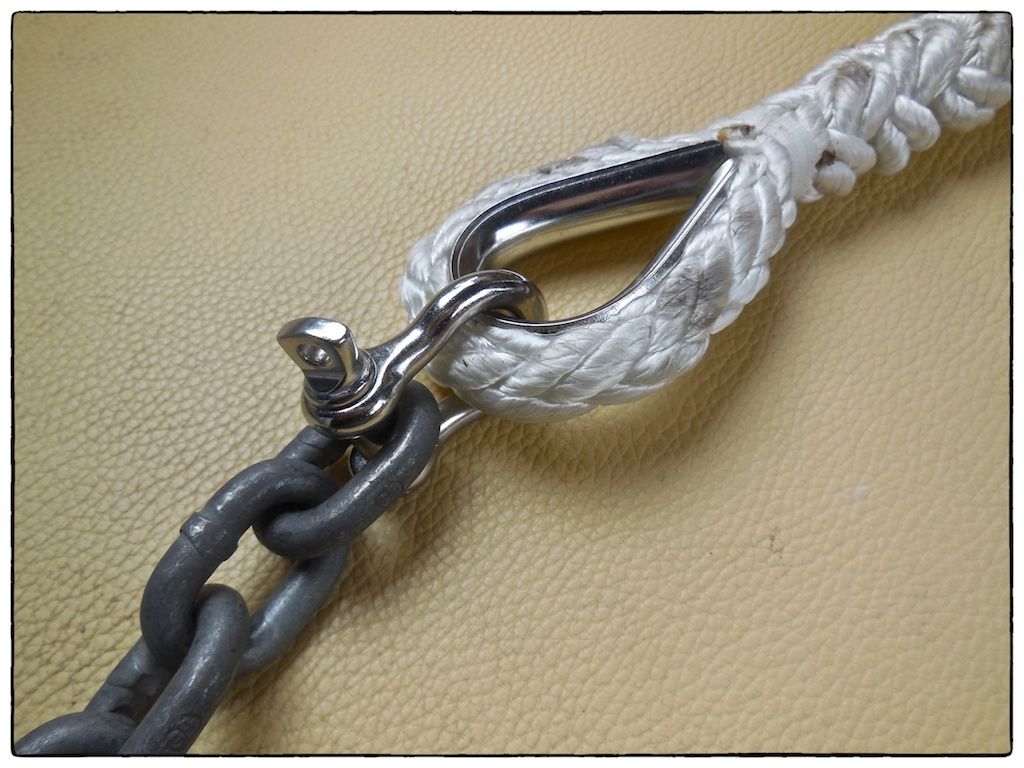 |
| The eye splice, thimble, and stainless steel shackle are shown here before adding the seizing wire to lock the shackle pin in place. |
Summary
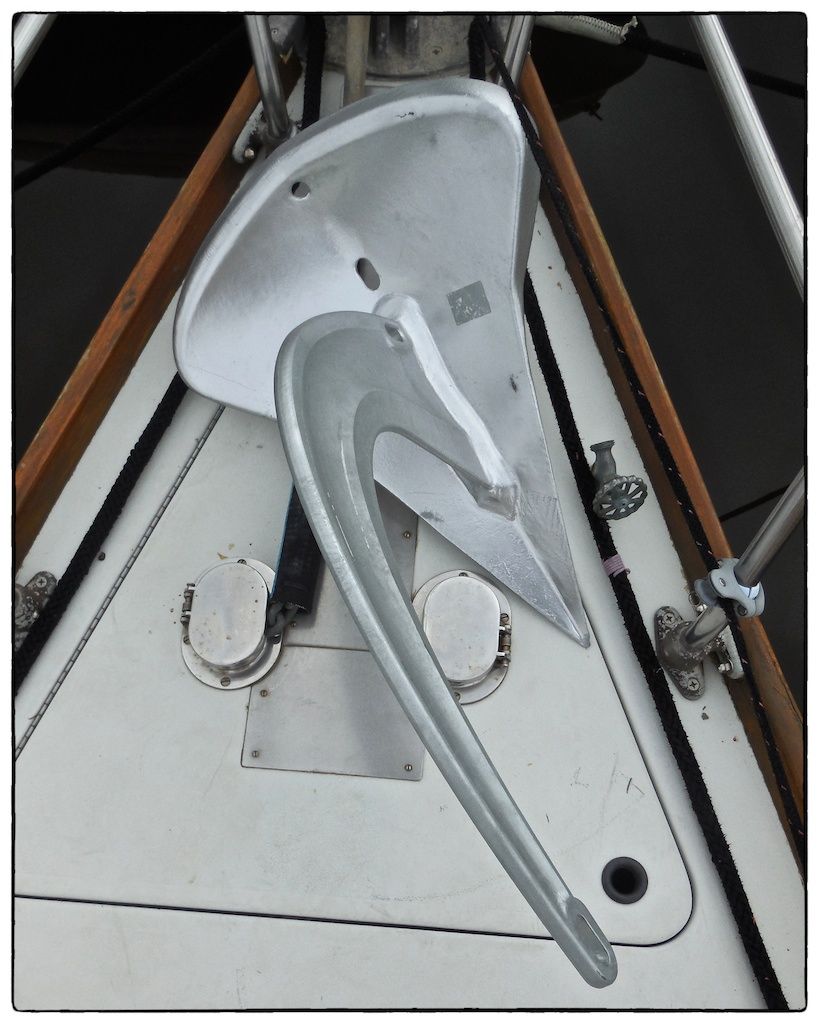 |
| The new Rocna Vulcan anchor sits loosely on our bow before fastening the anchor rode. |
I am confident that our new primary anchor system (coupled with our electronic anchor watch) will meet or exceed our objectives and prevent us from drifting onto a reef in the middle of the night.
Next up, will be the replacement of our 32-year old outhaul and the surprises that come with it. Stay tuned!
Thanks for following our blog!
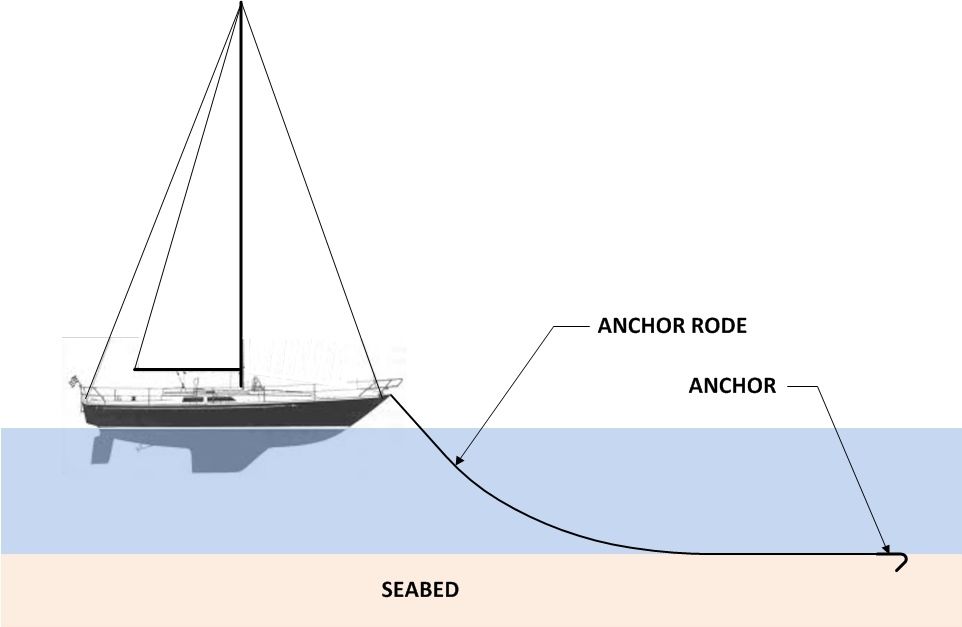
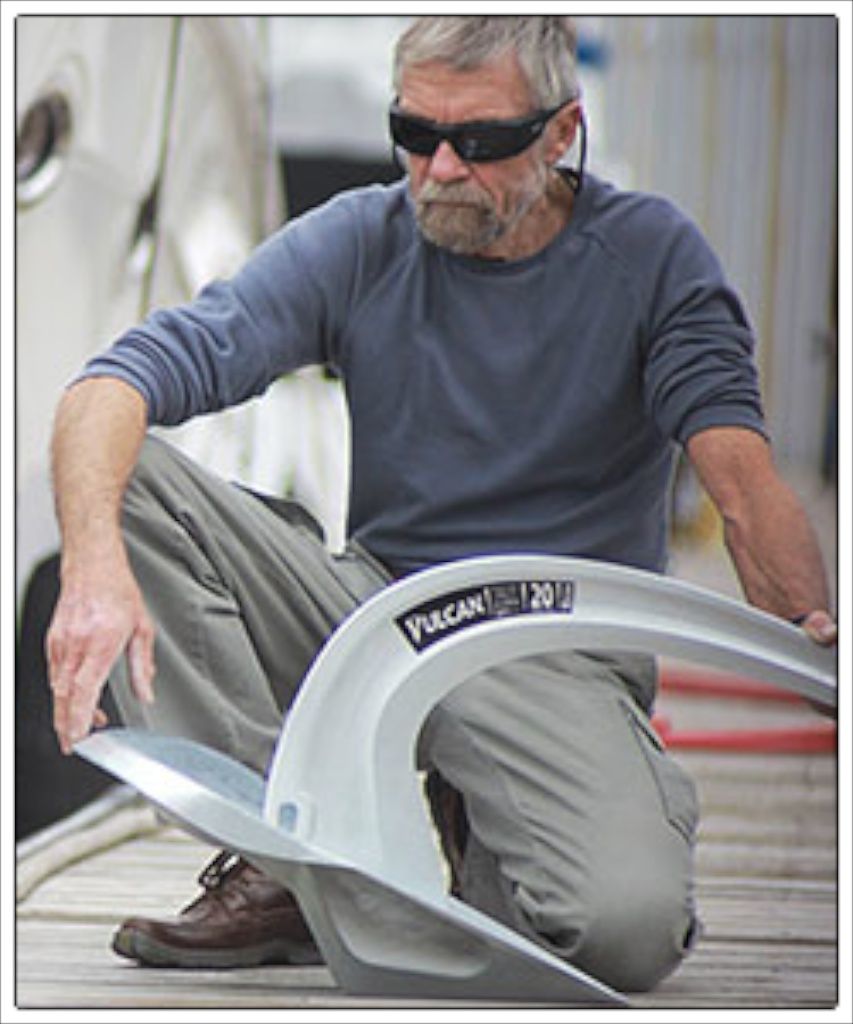
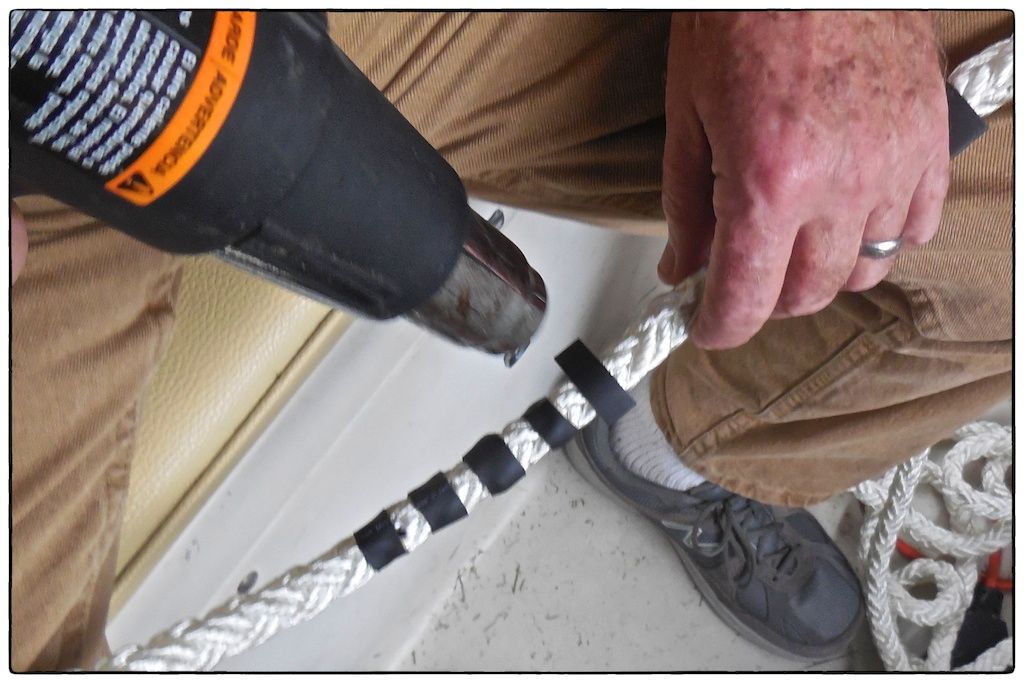
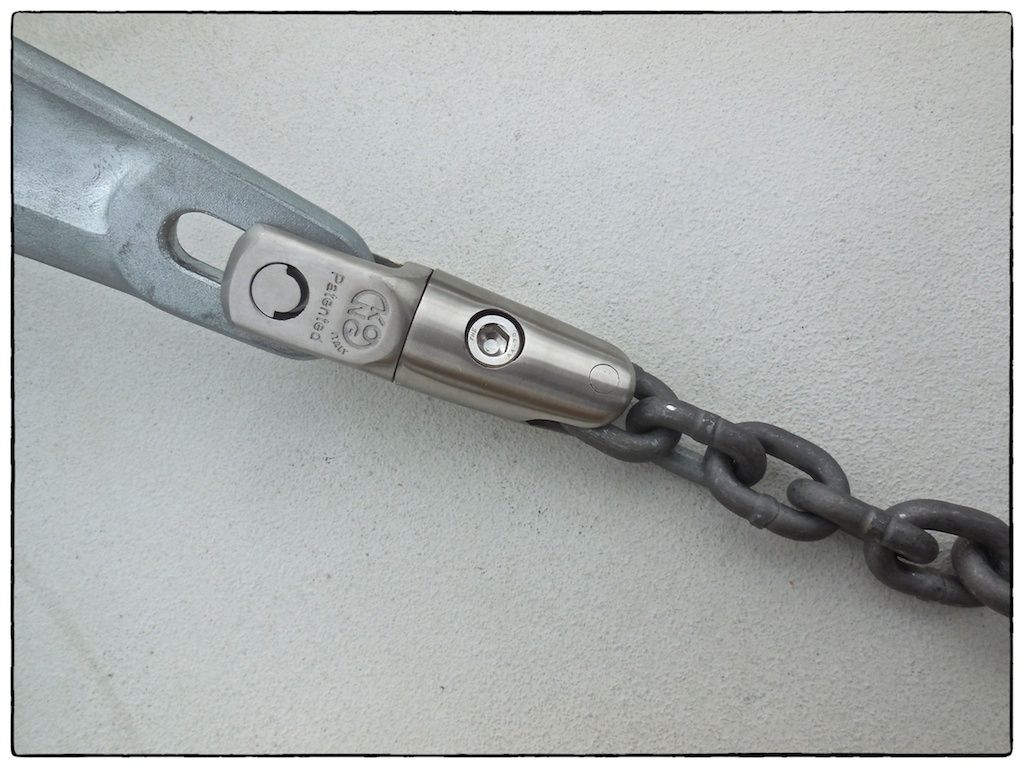
No comments:
Post a Comment